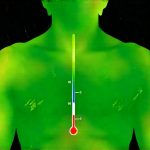The human body is an astonishingly complex system constantly striving for equilibrium – homeostasis. This isn’t just about maintaining core temperature or hydration; it encompasses everything from hormone levels to energy expenditure and appetite regulation. Often, these systems are interconnected in ways we don’t fully appreciate until something feels…off. One increasingly discussed phenomenon, particularly within communities exploring personal development and biohacking, is the experience of significant drops in both social energy expenditure (SEE) – the mental and emotional effort expended during social interaction – and concurrent appetite suppression. This isn’t necessarily a sign of illness, though it warrants investigation; rather, it can indicate substantial shifts occurring within the nervous system and metabolic processes, often tied to changes in lifestyle or stress management.
These drops aren’t always negative. For individuals historically overwhelmed by social demands or constantly battling fatigue, reduced SEE and appetite can feel liberating – a sense of calm and increased focus. However, when these changes are sudden, significant, or accompanied by other concerning symptoms, understanding the underlying mechanisms is crucial. This exploration will delve into what might cause simultaneous drops in social energy expenditure and appetite, examining the physiological connections, potential contributing factors, and ways to navigate this experience thoughtfully. It’s about recognizing that our internal states are dynamic and responding appropriately, rather than automatically pathologizing change.
Understanding Social Energy Expenditure (SEE) and Appetite Connection
Social Energy Expenditure isn’t a formally recognized scientific term in the traditional sense, but it’s a powerfully intuitive concept gaining traction. Essentially, SEE refers to the cognitive load – the mental effort – required to navigate social situations. This includes processing non-verbal cues, maintaining appropriate emotional responses, regulating boundaries, and managing potential anxieties related to social judgment. For some individuals, this expenditure is relatively low; they thrive in social settings and find them energizing. Others experience high SEE, finding social interactions draining even if they enjoy the connections themselves. Factors influencing SEE include personality traits (introversion vs. extroversion), past experiences (social trauma or anxiety), current stress levels, and neurological differences. High sensitivity individuals, for example, often report significantly higher SEE due to their increased awareness of environmental stimuli and emotional nuances.
A critical aspect of understanding this connection lies in the role of the parasympathetic nervous system. This “rest and digest” branch is responsible for conserving energy and promoting recovery. When we are stressed or overstimulated (including social overstimulation), the sympathetic nervous system – the “fight or flight” response – takes over, diverting energy to perceived threats. Chronic activation of the sympathetic nervous system leads to exhaustion and can ultimately impact appetite regulation. If SEE is consistently high, the body remains in a state of heightened alert, potentially suppressing appetite as it prioritizes resources for immediate survival (even if no actual threat exists). Conversely, when social interactions become less draining – when SEE decreases – the parasympathetic nervous system gains dominance, promoting relaxation and often leading to reduced hunger.
The link between SEE and appetite also involves hormonal regulation. Cortisol, a stress hormone released during periods of high social energy expenditure, can both increase and decrease appetite depending on its duration and concentration. Chronic cortisol elevation is linked to increased cravings for palatable foods (often high in sugar and fat), while acute or rapid drops in cortisol – often seen with decreased SEE and improved stress management – can lead to appetite suppression. Furthermore, the vagus nerve, a key component of the parasympathetic nervous system, plays a crucial role in both social engagement and digestive function. Increased vagal tone (a sign of healthy parasympathetic activity) is associated with better emotional regulation and more efficient digestion. Understanding how gut inflammation affects energy can also contribute to these processes is key for holistic wellbeing.
Potential Contributing Factors to SEE Drops & Appetite Changes
Several factors can contribute to simultaneous reductions in SEE and appetite. One primary driver is often a shift towards improved stress management techniques. This could involve anything from incorporating mindfulness practices like meditation or yoga, engaging in regular physical activity (which releases endorphins and reduces cortisol), or establishing healthier boundaries in relationships. When individuals actively reduce their overall stress load, the nervous system begins to recalibrate, leading to decreased social anxiety and a sense of calm that lowers SEE. This shift is often accompanied by a decrease in emotional reactivity, making social interactions feel less draining. As the sympathetic nervous system becomes less dominant, appetite can naturally decrease as the body enters a more relaxed state. For some, looking deeper into slow digestion may reveal underlying causes impacting these shifts.
Another significant factor is intentional lifestyle modification. This might involve reducing commitments, simplifying schedules, and prioritizing activities that are genuinely enjoyable rather than driven by obligation. Many people find themselves trapped in cycles of overcommitment and social obligation, leading to chronic fatigue and high SEE. By consciously choosing to prioritize rest and self-care, individuals can dramatically reduce their energy expenditure and restore a sense of balance. This doesn’t necessarily mean withdrawing from social life entirely; it means being more selective about how you spend your time and energy. It’s about quality over quantity – focusing on meaningful connections rather than superficial interactions. Planning midday meal plans that keep energy stable can also support these changes.
Finally, dietary changes can also play a role. Reducing processed foods, sugar intake, and caffeine consumption can stabilize blood sugar levels and reduce neurological inflammation, both of which contribute to anxiety and high SEE. Nutrient deficiencies, while less common, should also be considered. Deficiencies in vitamins D, B12, or magnesium, for example, can impact mood, energy levels, and appetite regulation. Addressing these deficiencies through diet or supplementation (under the guidance of a healthcare professional) may contribute to improved well-being and reduced SEE. It’s important to note that drastic dietary restrictions or elimination diets can sometimes exacerbate anxiety and stress, so any changes should be made gradually and thoughtfully. Understanding how GERD affects appetite is also valuable when considering dietary adjustments.
Navigating These Changes & Seeking Support
If you’re experiencing significant drops in both social energy expenditure and appetite, it is essential to approach the situation with self-compassion and curiosity. Avoid immediately jumping to conclusions or labeling these changes as negative. Instead, take time to reflect on what might be contributing factors – have you recently made any lifestyle changes? Are you managing stress more effectively? Have your dietary habits shifted? Keeping a journal can be incredibly helpful in tracking these changes and identifying patterns.
It is also important to rule out underlying medical conditions. While the drops in SEE and appetite are often linked to psychological or lifestyle factors, they could potentially indicate an undiagnosed health issue. If you have any concerns about your physical health, consult with a healthcare professional. This is particularly crucial if you experience other symptoms such as unexplained weight loss, fatigue, or changes in bowel habits. Exploring the connection between pancreas and energy metabolism can also provide important insights.
Finally, don’t hesitate to seek support from trusted friends, family members, or a therapist. Talking about your experiences can provide valuable insights and help you navigate any challenges that may arise. If the changes are causing significant distress or interfering with your daily life, professional guidance is recommended. A therapist can help you explore the underlying emotional factors contributing to these shifts and develop coping strategies for managing stress and maintaining healthy boundaries. Remember, prioritizing self-care and seeking support are signs of strength, not weakness. Additionally, modular meal plans for gas reduction can offer a supportive dietary approach during this time.


















